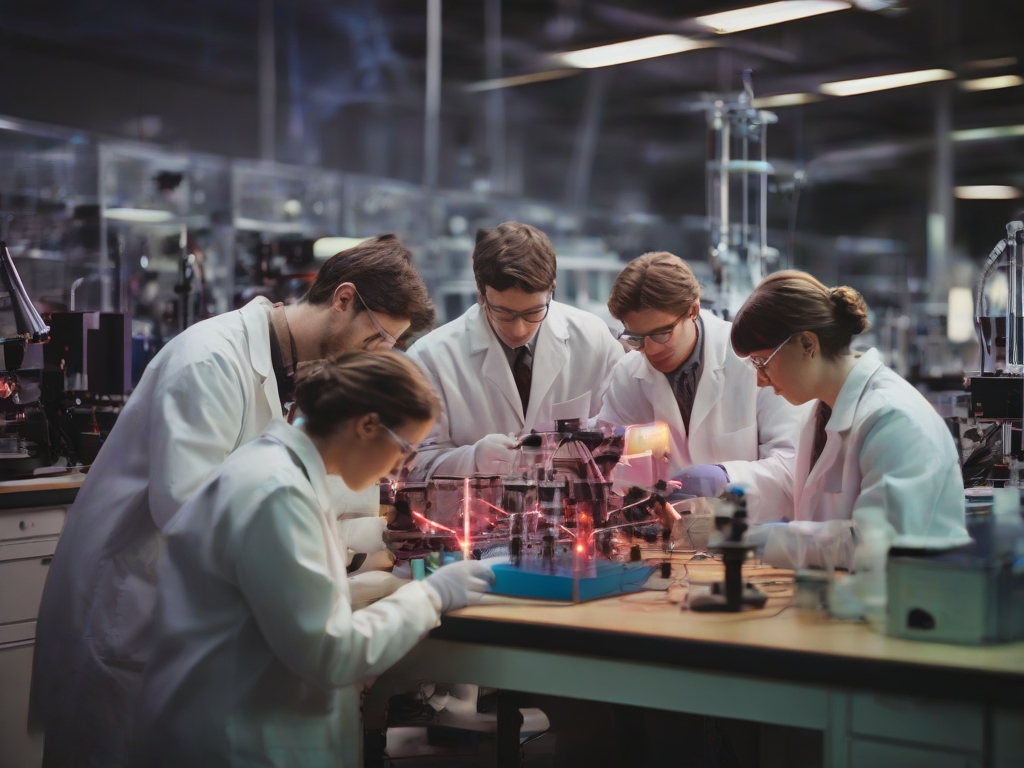II. ENERGY¶

(Image credit: Leonardo AI)
This is the second Volume of the series MODERN PHYSICS BY EXPLORING NOBEL PRIZES. It deals with one of the most universal concepts in Physics as well as in many other sciences: energy. To change the state of motion of physical objects some work needs to be done, coming out from inside the system or coming in from its external environment. Works are generated when the interacting agents called forces change positions, orientations, or oscillations. From the Physics point of view, work is both a requisite to change the state of motion as well as its consequence. Energy is required to produce work.
It is estimated that the universe contains 72% of dark matter (responsible for gravitational effects in galaxies and clusters of galaxies), 23% of dark energy (attributed to the accelerated expansion of the universe) and 4.6% of what up to now has been considered as common matter. As the 75% of this last component of energy-matter is composed by hydrogen, many efforts were applied to explain, theoretically and experimentally, the levels of energy in the simplest atom composed by one neutron, one proton and one electron.
In this Volume II we deal with the following aspects of energy: evidence of the existence of photons as quanta of electromagnetic energy, degeneracy and splitting of electronic energy levels, calculations of the motion of Brownian particles and the specific heat in solids, and energy transformations in photocells and in Light Emitting Diodes.
The Chapters of this second Volume are the following:
6. Energy quantization in the black body radiation.¶
6.1 Kinetic theory of gases and Thermodynamics.¶
6.2 The photon as a quantum of energy.¶
6.3 Components of the explanation of a scientific theory.¶
Quantization of energy is one of the most important concepts in Modern Physics. It was revolutionarily introduced by Planck to solve a strong discrepancy between experimental values of the intensity of the black body radiation and two theoretical attempts to explain those results. The experimental values obtained by spectroscopists were compatible with theoretical predictions only at low frequencies (Wien's law) and at high frequencies (Rayleigh – Jeans law). Although Planck introduced the hypothesis that energy is quantized, it was Einstein who generalized such assumption by conceiving that the quanta of electromagnetic radiation are photons of different frequencies. For those contributions, M. Planck and A. Einstein received a Physics Nobel Prize.
7. Spectroscopic studies of electronic levels.¶
7.1 Electronic energy levels according to atomic models.¶
7.2 Splitting of degenerated electronic energy levels in the hydrogen atom.¶
7.3 Identification of concepts and descriptions of models.¶
The set of permitted transitions between quantized electronic energy levels forms atomic spectra. When some levels have the same energy, it is said that they are degenerated. However, such degeneracy can be broken if extra perturbations are introduced into the potential energy that describes the interactions in the atomic model. Under such conditions, forbidden before transitions are produced and observed with very sophisticated experimental settings. This has been the case with the Lamb shift and the laser (Light Amplification by Stimulated Emission of Radiation). Concepts and models described in four Physics Nobel Lectures are then considered corresponding to the Nobel Prizes awarded to N. H. Bohr, W. E. Lamb, C. H. Townes, and A. L. Schawlow.
8. Brownian motion and specific heats.¶
8.1 Theoretical calculations and experimental results concerning Brownian motion.¶
8.2 Statistical mechanical calculations of the specific heat in solids.¶
8.3 Procedures to solve problems and explain solutions.¶
Statistical mechanics calculations are required when the number of components in a system is very large. Then, to calculate average values of quantities related to physical observables, interpretation models and calculation procedures must be proposed and tested. For explaining the Brownian motion, A. Einstein considered that the diffusion of the suspended particles was produced by lots of collisions with the surrounding particles and that such situation could be seen as a probabilistic process where the variable in consideration was the displacement of the suspended particles and not its velocity. Later J. Perrin made the experiments to confirm such equation and P. Langevin proposed another procedure of calculation. In the calculation of the specific heat in solids, three models of the solid have been discussed: the classic model by P.L Dulong and A.T. Petit, and the quantum models by A. Einstein and by P. Debye. J. Perrin received a Nobel Prize in Physics and P. Debye in Chemistry.
9. Conservation and transformation of energy.¶
9.1 Conservation laws and the existence of symmetries.¶
9.2 Energy transformations in photocells and in Light Emitting Diodes (LED).¶
9.3 Anthropological spaces for the development of collective intelligence.¶
The production, conservation, dissipation and saving of energy is a crucial practical problem. Conservation laws can be related to invariant properties of mathematical transformations associated to translation and rotations in space and to translation in time. The energy transformation processes connected with the operation of two devices is then considered: the photocells that work because in the photoelectric effect a metal generates electrons when it is radiated with light of certain frequencies, and the Light Emitting Diodes (LED) where, in a sort of inverse process, light is emitted when electrons flow through the device. A. Einstein received a Physics Nobel Prize for his explanation of the photoelectric effect and I. Akasi, H. Amano, and S. Nakamura for the invention of LEDs. The main conceptual developments and technological applications on energy are then described in connection of four anthropological spaces: the Earth, the Territory, the Merchandises and the Knowledge.
10. Experiments with entangled photons (2022 Physics Nobel Prize)¶
(TBD)
Created: 2023-03-12; Updated: 2025-12-10
Barojas-Weber, J.R., & Lizárraga-Celaya, C. (2023). Modern Physics through Nobel Prizes.
Creative Commons: Attribution-NonCommercial-ShareAlike 4.0 International
![]()